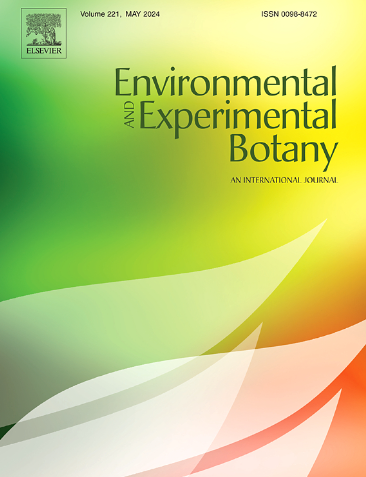柠檬酸和苹果酸通过影响溶度和形态影响甘蓝型油菜对铀(VI)的吸收
IF 4.7
2区 生物学
Q2 ENVIRONMENTAL SCIENCES
引用次数: 0
摘要
铀在土壤中的迁移及其对植物的吸收受到许多因素的影响,其中一个因素是有机酸的存在,例如植物根系分泌物在土壤中的存在。迄今为止,有机酸对动员和摄取的影响是已知的,但很少有人阐明所涉及的机制。本研究以甘蓝型油菜为材料,采用时间分辨激光诱导荧光光谱、透射电镜及能量色散x射线光谱等分析方法,探讨了两种有机酸对甘蓝型油菜水培培养基中U形态的影响以及U与甘蓝型油菜的生物关联。与不添加有机酸的对照样品相比,柠檬酸和苹果酸通过形成U(VI)柠檬酸和U(VI)苹果酸配合物显著提高了U在水培溶液中的溶解度,而有机酸在水培溶液中沉淀了大量的U。利用这种多方法的方法,我们首次证明了溶液中某些光谱观察到的U物种与植物不同程度的生物关联之间的相关性,以及柠檬酸和苹果酸在甘蓝型油菜中U转运模式的差异,为U与植物的相互作用提供了更多的见解。本文章由计算机程序翻译,如有差异,请以英文原文为准。
Citric and malic acids influence uranium(VI) uptake into Brassica napus in hydroponic culture by affecting solubility and speciation
The migration of uranium (U) in soil and its uptake into plants is known to be affected by many factors, one of which is the presence of organic acids, e.g. as root exudates of plants, in soil. To date, the influence of the organic acids on mobilization and uptake is known but very little has been elucidated about the mechanisms involved. In this study, using hydroponic cultivations of Brassica napus and combining the analytical methods time-resolved laser-induced fluorescence spectroscopy and transmission electron microscopy coupled with energy-dispersive X-ray spectroscopy, we explored the influence of two organic acids on the U speciation in hydroponic culture medium and the bioassociation of U to B. napus plants. Both citric acid and malic acid significantly increased the solubility of U in the hydroponic solution by forming U(VI) citrate and U(VI) malate complexes compared to control samples without the addition of the organic acids, in which a significant amount of U precipitated. By using this multi-method approach, for the first time, we could demonstrate the correlation between certain spectroscopically observed U species in solution and varying degrees of bioassociation to the plant as well as differences in U translocation patterns in B. napus between citric and malic acids, providing more insights into the interaction of U with plants.
求助全文
通过发布文献求助,成功后即可免费获取论文全文。
去求助
来源期刊

Environmental and Experimental Botany
环境科学-环境科学
CiteScore
9.30
自引率
5.30%
发文量
342
审稿时长
26 days
期刊介绍:
Environmental and Experimental Botany (EEB) publishes research papers on the physical, chemical, biological, molecular mechanisms and processes involved in the responses of plants to their environment.
In addition to research papers, the journal includes review articles. Submission is in agreement with the Editors-in-Chief.
The Journal also publishes special issues which are built by invited guest editors and are related to the main themes of EEB.
The areas covered by the Journal include:
(1) Responses of plants to heavy metals and pollutants
(2) Plant/water interactions (salinity, drought, flooding)
(3) Responses of plants to radiations ranging from UV-B to infrared
(4) Plant/atmosphere relations (ozone, CO2 , temperature)
(5) Global change impacts on plant ecophysiology
(6) Biotic interactions involving environmental factors.
 求助内容:
求助内容: 应助结果提醒方式:
应助结果提醒方式:


